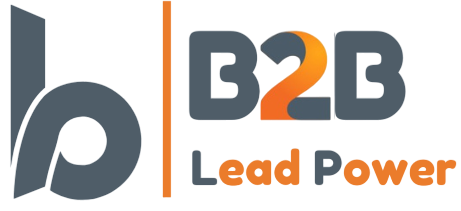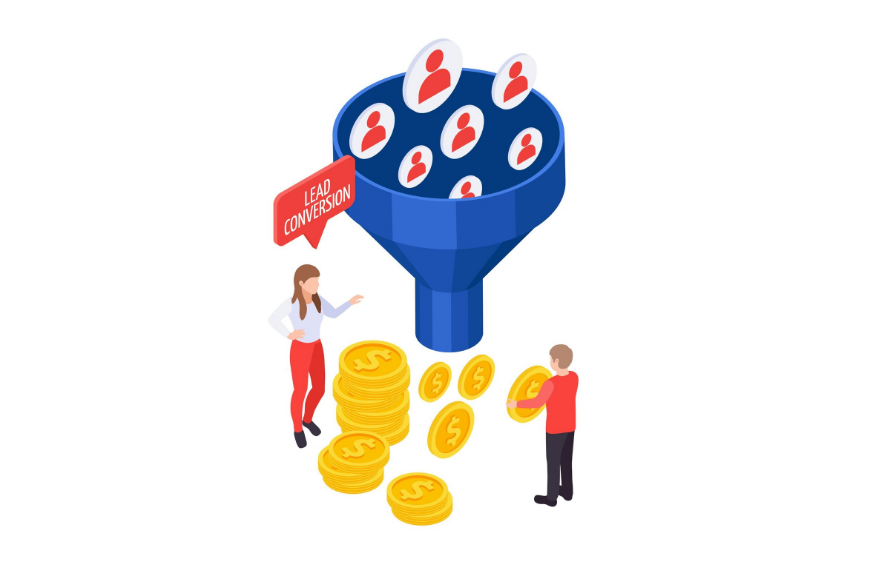Table of Contents
- Introduction
- What Makes Interactive Content So Powerful?
- The Three Conversion Powerhouses
- The Data Dividend of Interactive Content
- Integrating Interactive Content into the B2B Funnel
- Design and UX Considerations
- Tools and Platforms for Building Interactive Content
- Measuring Success: Key Performance Indicators
- The Future of Interactive Content in B2B
- Conclusion
Introduction
In an age where digital attention spans are shrinking and buyer skepticism is rising, static content alone is no longer enough to drive meaningful engagement. Marketers who want to break through the noise must deliver personalized, immersive experiences that invite participation rather than passive consumption.
That’s where interactive content—including calculators, quizzes, and assessments—comes into play. Unlike traditional whitepapers or blogs, interactive tools encourage users to engage, input data, and receive personalized outcomes in real time. This active involvement not only captures attention but also builds trust and accelerates conversions across the B2B journey.
For modern businesses, interactive content isn’t a creative experiment—it’s a conversion engine.
What Makes Interactive Content So Powerful?
Interactive content operates on a simple yet profound principle: people value what they help create. When audiences interact with a tool or assessment, they invest effort, attention, and often personal data. In return, they expect insight, validation, or recommendations that add genuine value.
Why It Works
- Higher Engagement: Interactive content drives longer on-page time and deeper user interaction compared to static materials.
- Personalized Value Exchange: Users receive tailored insights, making their experience more relevant and rewarding.
- Lead Qualification: Each interaction generates behavioral and demographic data that sharpens lead scoring accuracy.
- Trust Building: Offering transparent, data-backed results positions brands as helpful advisors, not just sellers.
- Viral Potential: Quizzes and tools are more likely to be shared, amplifying reach organically.
In essence, interactive content transforms digital marketing from a monologue into a dialogue.
The Three Conversion Powerhouses
1. Calculators: Turning Data Into Decisions
Calculators are among the most effective types of interactive content for B2B brands. They allow users to quantify value, compare outcomes, and justify purchasing decisions through real-time data modeling.
Common Use Cases:
- ROI Calculators: Show how much money or time a solution saves.
- Pricing Estimators: Help prospects estimate cost based on variables.
- Efficiency Calculators: Demonstrate performance gains with your product.
For example, an IT services provider might offer a Cloud Migration ROI Calculator that quantifies potential savings when shifting to a managed cloud environment. This not only captures leads but also helps sales teams prioritize high-intent prospects who understand the value proposition.
Best Practices:
- Keep the user interface simple and intuitive.
- Limit inputs to critical variables for speed.
- Display results visually, such as with graphs or dynamic text.
- Include a subtle CTA (e.g., “Get Your Detailed Report via Email”).
When executed well, calculators don’t just generate leads—they create self-qualified, purchase-ready prospects.
2. Quizzes: Driving Engagement Through Curiosity
Quizzes leverage the human tendency toward self-assessment and curiosity. They offer immediate gratification by revealing “something about you” or “your business performance,” which makes them inherently engaging.
Popular B2B Quiz Formats:
- “What Type of Buyer Are You?” (Ideal for sales segmentation)
- “Is Your Marketing Strategy Future-Ready?”
- “Find Out Your Cybersecurity Readiness Score”
Quizzes excel in top-of-funnel engagement but can also support middle-funnel nurturing. The key is to align quiz outcomes with your brand’s positioning and ensure each result provides real insight rather than superficial entertainment.
Example:
A cybersecurity firm could create a quiz titled “Can Your Organization Survive a Ransomware Attack?” Users answer scenario-based questions, receive a readiness score, and are then prompted to download a personalized report or schedule a consultation.
Best Practices:
- Ask 6–10 targeted questions; too few feels trivial, too many feels tedious.
- Use conditional logic to deliver relevant outcomes.
- Provide educational context with each result.
- Follow up with tailored email nurturing sequences based on quiz outcomes.
When integrated with marketing automation, quizzes can serve as behavioral segmentation engines, refining how brands communicate with different audience personas.
3. Assessments: Establishing Thought Leadership
Assessments take the quiz concept a step further by incorporating diagnostic frameworks and benchmarking. They are often used in mid- to late-funnel contexts where buyers seek strategic validation.
Examples of B2B Assessments:
- Digital Maturity Assessment
- Supply Chain Resilience Audit
- Sales Enablement Readiness Check
Assessments typically end with a detailed results page or downloadable report that positions the company as a trusted consultant. These assets perform exceptionally well for complex or high-ticket B2B solutions, where decision-makers expect depth and expertise.
Best Practices:
- Anchor questions in an established framework (e.g., industry standards).
- Offer tangible recommendations tied to your service or product.
- Enable users to benchmark against peers using aggregated data.
- Integrate with CRM to pass qualified leads directly to sales.
Unlike calculators or quizzes, assessments attract more serious buyers seeking transformation—not just information.
The Data Dividend of Interactive Content
Beyond engagement and lead generation, interactive tools deliver data-driven intelligence that fuels smarter marketing and sales alignment.
- Behavioral Insights: Track how users interact, which options they select, and where they drop off.
- Segmentation Data: Build granular audience segments based on engagement type and response patterns.
- Predictive Analytics: Use engagement data to model conversion likelihood and prioritize outreach.
- Personalized Nurturing: Feed quiz or assessment results into automated campaigns tailored to each user’s profile.
This feedback loop creates a self-optimizing marketing ecosystem, where every interaction refines future targeting and messaging.

Integrating Interactive Content into the B2B Funnel
To unlock the full potential of calculators, quizzes, and assessments, B2B marketers must integrate them strategically within the broader lead funnel.
Top of Funnel (TOFU): Awareness and Engagement
Use quizzes and lightweight calculators to attract and engage visitors early. Keep entry friction low and emphasize discovery.
Middle of Funnel (MOFU): Education and Qualification
Deploy assessments or advanced ROI calculators to identify high-intent leads. Collect richer data through gated outcomes or email-based reports.
Bottom of Funnel (BOFU): Conversion and Retention
Offer detailed audits or implementation readiness tools to reinforce value before purchase. Follow up with tailored consultations or demos.
When aligned across the funnel, interactive content doesn’t just attract traffic—it propels leads through the pipeline.
Design and UX Considerations
Even the most brilliant tool can fail if poorly designed. B2B buyers expect smooth, professional experiences that reflect credibility.
- Prioritize Mobile Responsiveness: 60%+ of B2B buyers engage via mobile.
- Keep Load Times Short: Interactivity must not compromise speed.
- Use Visual Cues: Progress bars, animations, or icons help maintain engagement.
- Show Immediate Value: Reveal partial results instantly before asking for contact info.
Great interactive content feels effortless, intuitive, and inherently valuable.
Tools and Platforms for Building Interactive Content
Creating high-performing interactive assets no longer requires heavy development resources. Marketers can leverage platforms such as:
- Outgrow – for calculators and quizzes with robust analytics.
- Typeform – for conversational-style assessments.
- Ceros – for immersive, design-driven interactive experiences.
- Ion Interactive – for enterprise-grade lead generation content.
Selecting the right tool depends on your funnel objectives, technical ecosystem, and design capabilities.
Measuring Success: Key Performance Indicators
To determine the ROI of interactive content, track metrics beyond clicks and views.
Core KPIs:
- Engagement Rate (completion or interaction percentage)
- Lead Conversion Rate
- Time on Page and Scroll Depth
- Form Completion and Data Capture Rate
- Attributable Pipeline Revenue
By analyzing these indicators, marketers can quantify the contribution of interactive assets to sales outcomes, enabling continuous optimization.
The Future of Interactive Content in B2B
As AI and data analytics mature, interactive content will evolve into adaptive experiences—where quizzes, calculators, and assessments dynamically adjust questions or recommendations based on real-time responses.
We’ll also see:
- Predictive Interactivity: Tools that anticipate next actions using behavioral signals.
- Integrated Personalization Engines: Unified data platforms tailoring outcomes across channels.
- Immersive Formats: AR/VR assessments or simulation-based engagement tools.
In this new era, interactive content won’t just attract attention—it will guide buyer decisions with precision and empathy.
Conclusion
Interactive content represents a paradigm shift in digital marketing. By combining personalization, participation, and value delivery, tools like calculators, quizzes, and assessments transform passive audiences into active participants—and eventually, into loyal customers.
For B2B brands navigating crowded digital markets, these assets serve as both lead magnets and trust multipliers. They reveal intent, accelerate decision-making, and generate actionable data that drives future strategy.





Leave a Reply